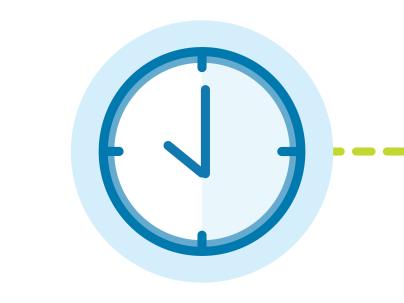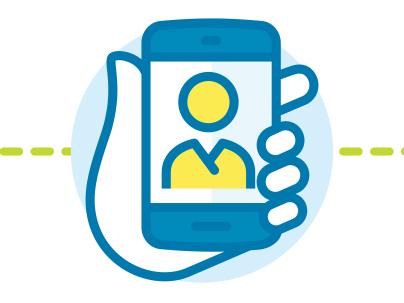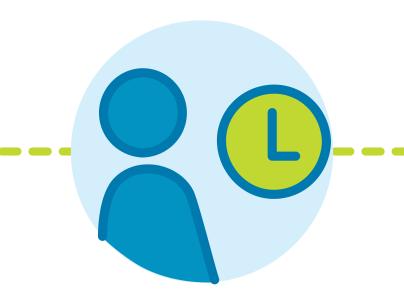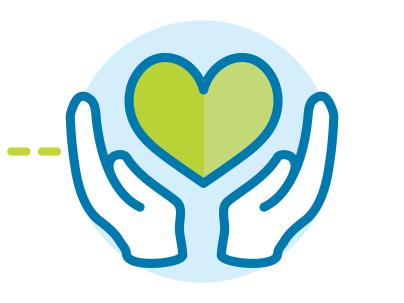Phalloplasty patient journey
Learn about the patient journey and timeline for phalloplasty
A phalloplasty surgery uses microsurgery to move tissue from one area of the body to create a penis. The most common technique is to roll the tissue into a tube to create a urethra and external penile shaft. Nerves and blood vessels are then reattached to give sensation and blood flow to the penis. Common components of phalloplasty include urethral lengthening, vaginectomy (removal of the vagina) and scrotoplasty (creation of a scrotum). Patients with phalloplasty have the potential to have a penile implant inserted in a later, separate, surgery to achieve erection.
There are 4 types of phalloplasty surgery offered at the Gender Surgery Program B.C. (GSPBC):
- Free Radial Forearm (RFF) Phalloplasty is when tissue from your arm is used to make your penis.
- Anterior Lateral Thigh (ALT) Phalloplasty is when tissue from your thigh is used to make your penis.
- Superficial Circumflex Iliac Artery Perforator (SCIP) Flap is when tissue from your flank is used to make your penis.
- Abdominal Phalloplasty is when tissue from your lower abdomen is used to make your penis. Please note that urethral lengthening is not an option with abdominal phalloplasty
Phalloplasty journey
Click on the below steps to learn more
-
Waiting for intake
Once the Gender Surgery Program B.C. (GSPBC) has received your referral package, your GP will be notified, and our clerks will email you a welcome package.
The wait time from accepted referral to intake appointment can be 12-16 months. Please note this wait time can vary. During this wait time you can begin to prepare yourself for surgery as much as possible. This can include working on stopping smoking, improving your overall health and wellness, putting money aside, working to find a GP, and many more important pieces of readiness.
-
Intake and first surgical consultation
Your first appointment with the Gender Surgery Program B.C. (GSPBC) will be an intake appointment over the phone with one of the GSPBC Nurses. The purpose of this session is to confirm your medical history and get a full sense of how best we can support you.
At a later date, you will then meet with a surgeon. This appointment typically happens via zoom. They help provide more information about your surgery, answer questions, and help determine steps to move towards surgical readiness.
-
Second surgical consultation
This consultation is when the surgeon will perform a physical exam. The physical exam will involve looking at your current genitals, and examining the expected donor area that your phallus will be made from.
If you are undergoing urethral lengthening, you will begin hair removal after your second surgical consultation.
If you are traveling from out of town for this appointment and have concerns regarding this trip – you can look into options for reducing cost. We are happy to provide a TAP form if you are taking a ferry. Hope Air is a charity that can assist with transportation depending on eligibility. You may also request a phone call with the Gender Surgery Program B.C. (GSPBC) Social Worker if you are experiencing barriers to coming to our clinic.
-
Hair Removal (urethral lengthening only)
Hair removal via electrolysis is mandatory if you are having urethral lengthening. This is to prevent hair from later growing inside your urethra.
The process of hair removal takes different amounts of time for each person depending on the amount of hair and their body. We estimate it can take 12-18 months of diligent hair removal to complete.
Please note that any hair removal completed prior to your second surgical consultation will not be eligible for reimbursement or refund.
For more information on hair removal please see our resource documents
-
Third Surgical Consultation
This consultation occurs when you are finished or nearing completion of hair removal. It often involves another physical exam.
If all steps are completed, you are deemed surgically ready and added to a wait list for surgery
-
Preparing for surgery
While waiting for your surgery date, there are things you can work on to be as prepared as possible.
You will have allied-health appointments virtually to help identify these areas. You will meet with the Gender Surgery Program B.C. (GSPBC) Social Worker for an assessment, and to help prepare multiple kinds of supports, travel, accommodation, and a post-surgery support plan.
For all types of phalloplasty, we ask patients to arrive in the Lower Mainland 1-2 days prior to surgery and stay locally for 6-7 weeks following surgery. This local stay will allow you to be closely monitored by the GSPBC team and be nearby in the event of a post-surgical emergency. You may also have a second stage minor surgery depending on your surgery type during this time.
We recognize that if you are from out of town, this can be a large financial burden. We encourage you to plan ahead by thinking of friends or family you could stay with, budgeting and saving, and looking into resources.
The social worker will help to determine if you can apply for resources to off-set the cost of this local stay.
You will also check-in with the GSPBC Pelvic Floor Physiotherapist for an assessment. This appointment is typically completed via zoom. During this appointment, they will teach you about your pelvic floor muscles and how you can prepare this area for the impact of surgery.
When a surgical date is offered to you, you will receive further education on your surgery. The Enhanced Recovery After Surgery (ERAS) booklet will be reviewed with the clinic nurse.
To learn more about how you can prepare for your upcoming surgery, read our guide to preparing for gender-affirming surgery.
Surgery Wait Times
Once you are added to the surgical waitlist, a GSP nurse will connect with you to discuss wait times. Please note that the wait time for surgery fluctuates constantly. This is mainly due to the amount of operating room (OR) time our program receives. GSPBC receives OR time in roughly 3 month intervals and the amount of OR time we given each month often changes – making it very difficult to predict wait times. As phalloplasty requires 2-3 surgeons to be present, and can only be done at VGH, the wait times tend to be longer than our other surgery types.
-
Surgery
Your surgery will be at Vancouver General Hospital (VGH).
You can expect to be in the hospital 7 days following phalloplasty surgery. During your hospital stay you can have visitors between 8:00am – 8:00pm.
During your stay you can expect the following:
- Warm room (but single room!)
- Hourly Doppler checks (penis pulse check)
- Forearm cast changed to splint (Day 2)
- VAC dressing to donor forearm
- Suprapubic Catheter & Foley Catheter
- Bed rest (5 days) & mobility restrictions continuing onwards (4 weeks)
- Gradual return to regular diet (continue stool softeners in hospital & at home)
-
Post-surgery
You can expect to have 1-3 appointments per week for the first few weeks post discharge for dressing changes and monitoring.
If having second stage surgery, this typically happens 3-5 weeks after surgery and involves glansplasty, skin graft from thigh to forearm, and VAC dressing to the arm.
One week after your second stage surgery you will have an appointment for a dressing change, VAC dressing removal, and potential trial of peeing through your penis.
After another week, if the trial of peeing has gone well, your suprapubic catheter can be removed.
During weeks 5-6 you will have hand therapy appointments with a certified hand therapist at VGH.
Things to know:
- Expect swelling and bruising, some minor bleeding is normal
- Expect fatigue, walking will be slow initially, limited sitting
Gradual return to activity/work around 12 weeks (depending on work and healing)
After the first 6 weeks, your follow-up will be tailored to your specific healing. You can expect to come back to the clinic in 6 months and 1 year for in-person check-ins with the surgeon. You may have additional appointments between these as needed.
If you are interested in implants, you can discuss this with the surgeon at the 1-year mark.
Resources
-
-
Penis Construction Workbook
-
Phalloplasty Enhanced Recovery After Surgery (ERAS) workbook
-
Emergency Care Post-Phalloplasty
-









